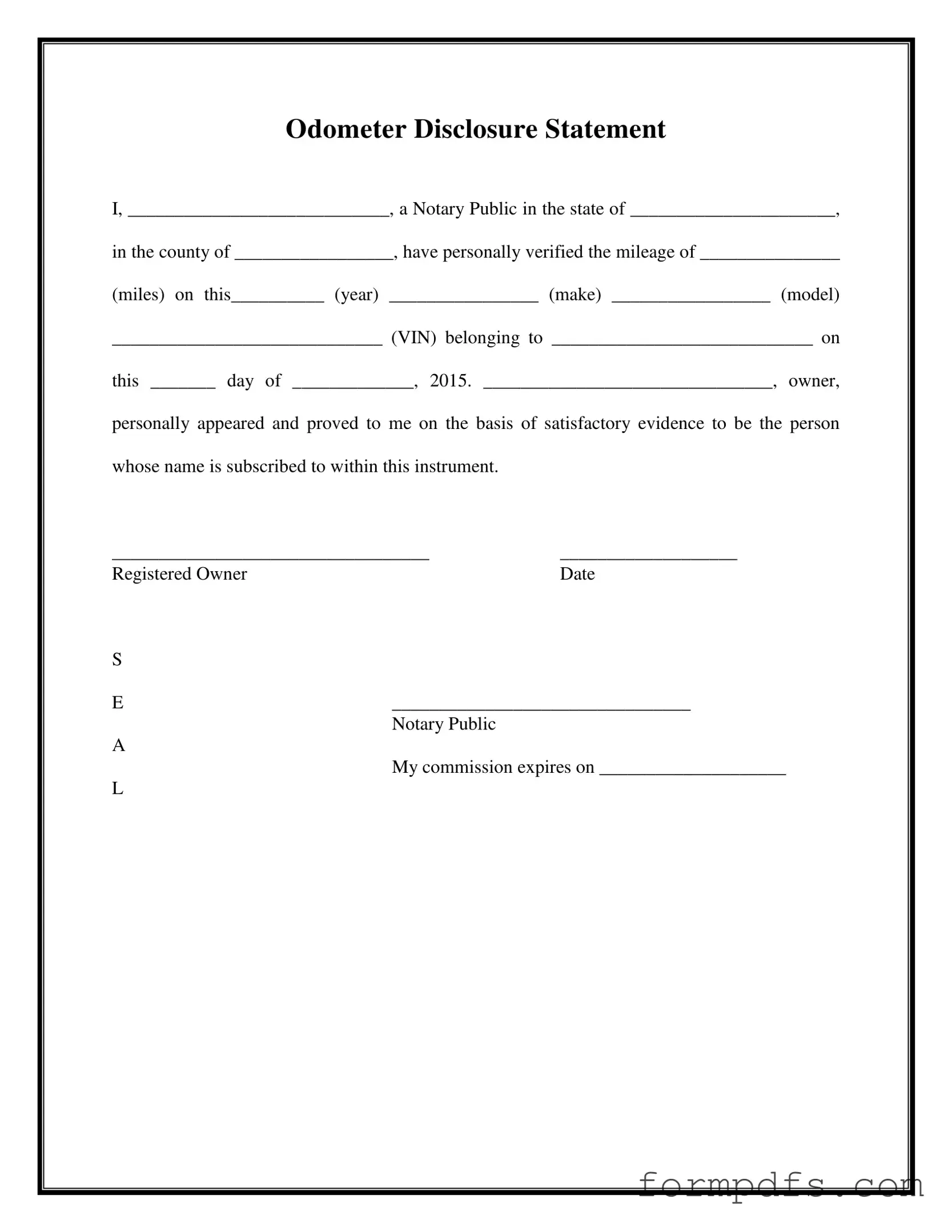What is a Notarized Odometer Statement?
A Notarized Odometer Statement is a legal document that confirms the mileage of a vehicle at the time of sale. This statement is signed by the vehicle's owner and notarized by a public notary. It serves to protect both the buyer and the seller by ensuring that the mileage reported is accurate and verified.
Why is a Notarized Odometer Statement necessary?
This statement is necessary to prevent fraud in vehicle sales. It provides a formal record of the vehicle's mileage, which is important for determining its value and condition. Many states require this document as part of the vehicle transfer process to ensure transparency and accountability.
Who can notarize the Odometer Statement?
A Notary Public, who is authorized by the state, can notarize the Odometer Statement. The notary verifies the identity of the person signing the document and ensures that they are doing so willingly and without coercion.
What information is included in the Notarized Odometer Statement?
The statement includes the name of the notary, the state and county where the notarization takes place, the mileage of the vehicle, the year, make, model, and Vehicle Identification Number (VIN). It also includes the name of the vehicle owner and the date of notarization.
How does one complete the Notarized Odometer Statement?
To complete the form, the vehicle owner must fill in their details, including the accurate mileage, vehicle information, and the date. Afterward, the owner must present this information to a Notary Public, who will verify the details and sign the document.
Is there a fee for notarizing the Odometer Statement?
Yes, most notaries charge a fee for their services. The fee can vary depending on the state and the notary's individual rates. It is advisable to inquire about the fee beforehand to avoid any surprises.
What should I do if I lose the Notarized Odometer Statement?
If the Notarized Odometer Statement is lost, you should contact the notary who performed the notarization. They may have a record of the transaction and can provide a copy if needed. If that is not possible, you may need to complete a new statement and have it notarized again.
